Still have questions? Leave a comment

Checklist: Dissertation Proposal
Enter your email id to get the downloadable right in your inbox!

Examples: Edited Papers
Enter your email id to get the downloadable right in your inbox!
Need
Editing and
Proofreading Services?

Research Paper Format: APA, MLA, & Chicago Style
 Apr 28, 2025
Apr 28, 2025 4
min read
4
min read
- Tags: APA, APA Style, Formatting Guidelines
In academia, research papers help us share key findings and valuable knowledge with everyone. Whether you’re in high school, college, or university, you must know how to format a research paper so you can submit a well-organized document.
The three standard formats of research papers widely used in academia are MLA, APA, and the Chicago research paper format. We’ll discuss all three paper formats in detail with actionable tips and guidelines to help you avoid rookie formatting mistakes.
Take Your Research To The Next Level With Expert Editing! Get Started
We’ve also added several examples of research paper formats so you can easily learn the proper way to structure and format your research paper. Given below are the three types of research paper formats widely used in academia:
1. APA format
The American Psychological Association (APA) format is a research paper format popular among scholars, especially in sciences and social sciences. This style emphasizes clarity and conciseness, making it an excellent format for presenting complex scientific ideas in a digestible manner.
Just so we cover all bases, we’ve included plenty of research paper format examples. Take a look!
General guidelines
The APA paper format follows a set of simple yet strict guidelines to ensure uniformity across different works. Here are some tips on how to format a paper in APA style:
- Double-space all your text.
- Maintain one-inch margins on all sides of the paper.
- Use a font style that is easy to read (typically 12-point Times New Roman).
- Include an APA header on all pages of your paper.
- Make sure each new paragraph is indented by 0.5 inches.
- Insert a running head and page numbers in the header of each page to adhere to APA formatting guidelines.
Take a look at this research paper format example outlining the various APA formatting guidelines:
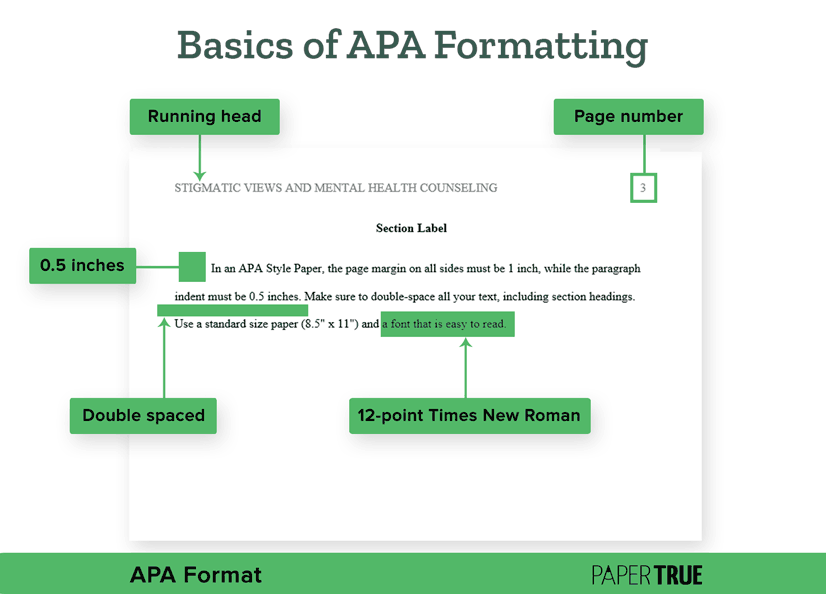
Title page
One of the key features of the APA format is its title page. The APA title page serves as the face of your research paper layout, providing essential information about your work. Keep the following in mind:
- Write a title that’s a crisp summary of the paper’s content.
- Mention the author’s name without any titles or degrees.
- Mention the institutional affiliation (the place where the research was conducted).
- Add a header at the top of the page.
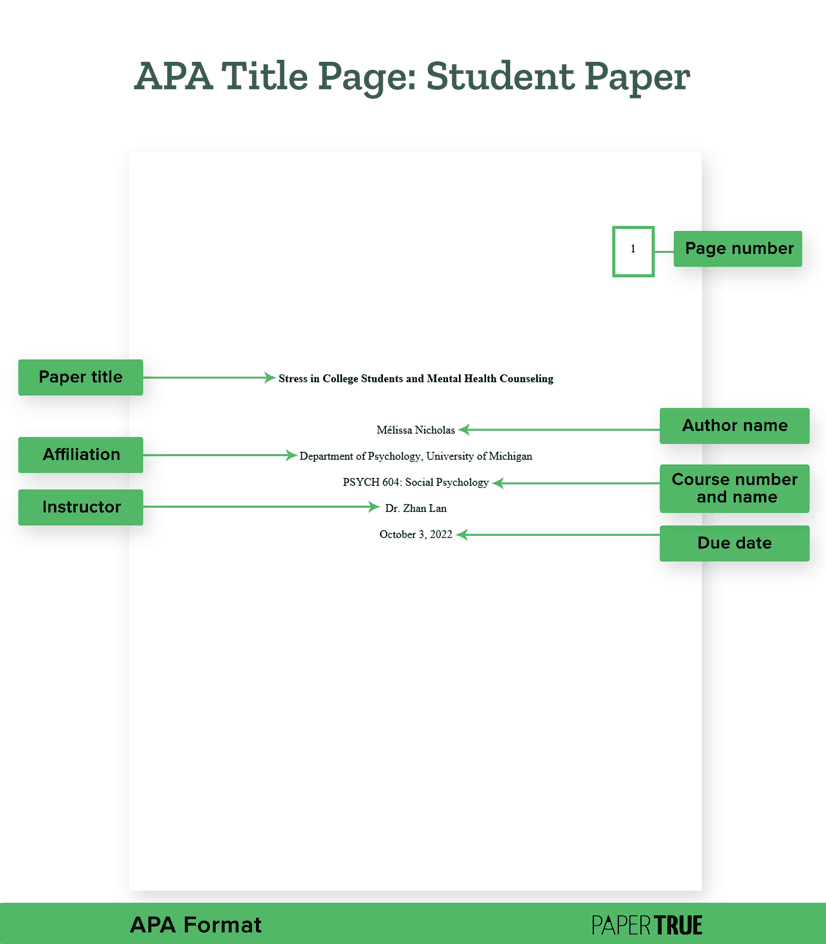
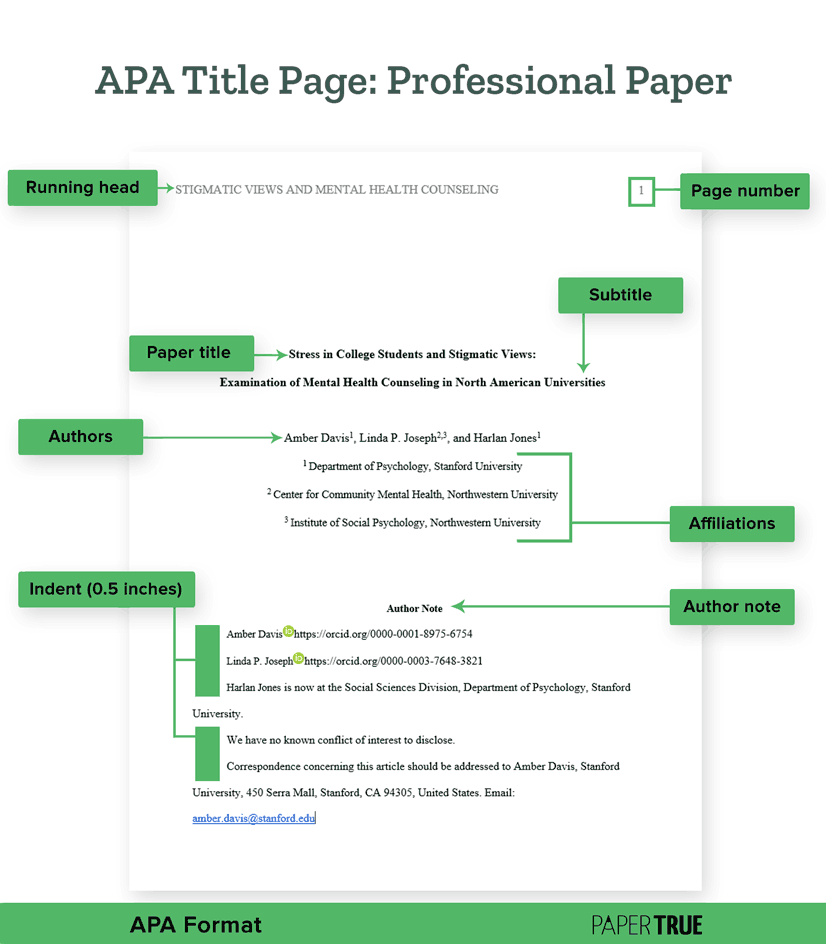
Reference page
The reference page is a critical part of the layout of a research paper in the APA style. This page lists all the sources you’ve referenced in your paper. It’s essential for avoiding plagiarism and providing your readers with the opportunity to explore your sources further.
Follow the tips mentioned below when formatting your reference page in APA style:
- Add a “References” label at the top and align it centrally.
- Organize your entries alphabetically based on the last names of the authors.
- Ensure that every entry is double-spaced.
- Acknowledge all sources in the text to maintain transparency in your research process.
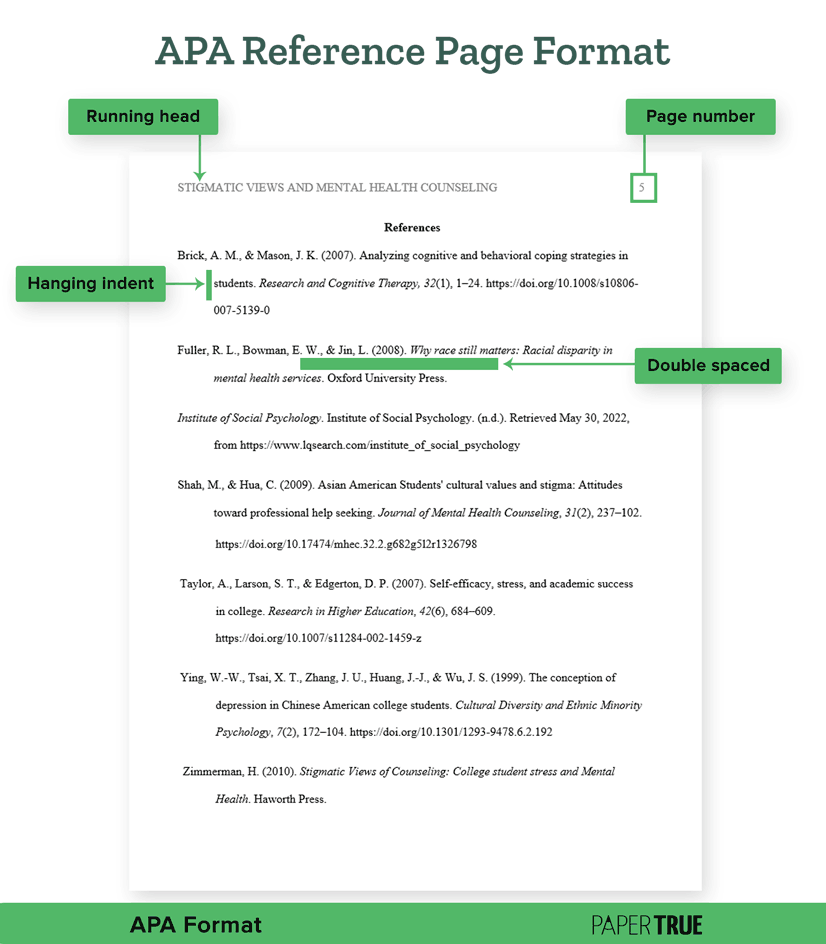
Special formatting guidelines
Major headings under APA 7 are bolded and aligned centrally, while the subheadings are indented and end with a period. Subsequent levels of headings are used here:
This format of research papers necessitates a distinct heading structure, facilitating seamless navigation through the different formats. It also implements a unique citation format, guaranteeing that all your references are accurately acknowledged. Major headings are bolded and center-aligned, whereas subheadings are indented and end with a period.
The subsequent levels of headings are used in the APA paper format:
- Level 1: Bold, centered
- Level 2: Bold, left-aligned
- Level 3: Bold italic, left-aligned
- Level 4: Indented, bold
- Level 5: Indented, bold italic
Bonus tip: Titles for tables and figures should be succinct and clear and should be referenced in the text by their respective number. For instance, “As demonstrated in Table 1…”
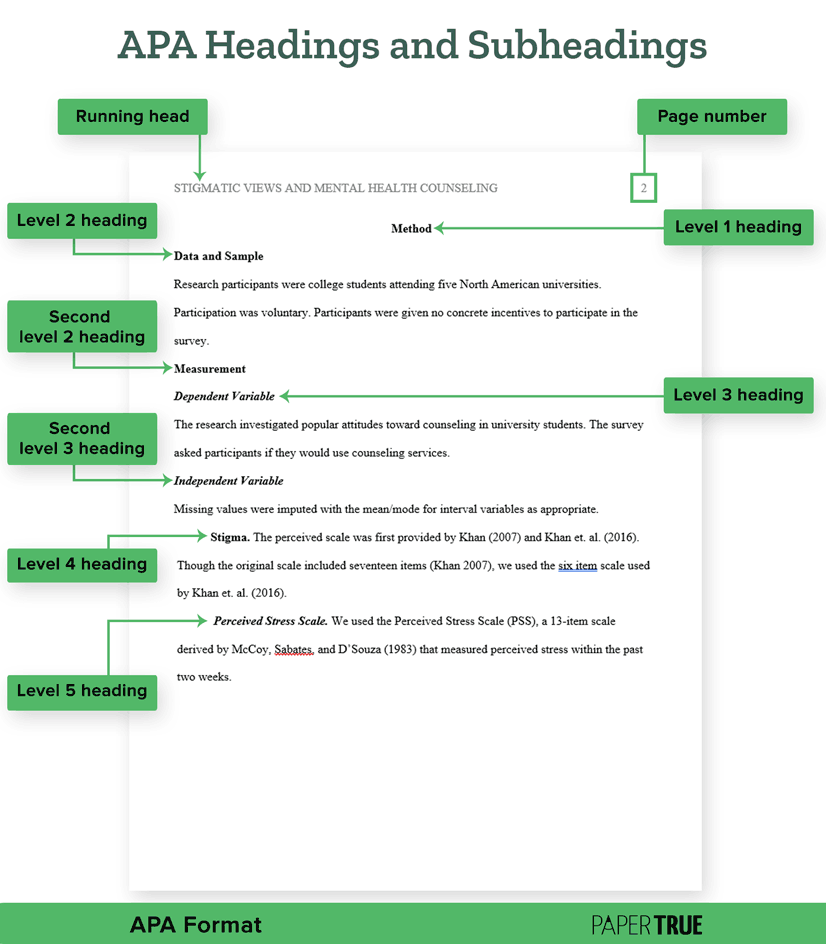
2. MLA format
The Modern Language Association (MLA) format is another frequently utilized format for research paper writing, primarily within the humanities. It underscores authorship, making it an excellent choice for papers that concentrate on original analysis.
For the visual learners out there, we’ve added some research paper format examples for your benefit! So, make sure you follow these guidelines while writing your paper.
General guidelines
The general guidelines of the MLA paper writing format are designed to establish a uniform and professional appearance for your work. Follow these steps when formatting your paper in MLA format:
- Use double spacing for your text.
- Maintain one-inch margins all around.
- Opt for a readable font like 12-point Times New Roman.
- Incorporate a header with your last name and page number on every page.
- Use title case for headings, capitalizing the first letter of each major word.
- Include the instructor’s name, course number, and date on the first page to adhere to MLA formatting guidelines.
Title page
The MLA paper format doesn’t typically necessitate a separate title page. Instead, the required information is positioned on the first page of the paper, which includes the following:
- Name of the student
- Instructor’s name
- Title of the course
- Course number
- Date of submission
The title of the paper is presented in the next line, bolded and centered. It’s crucial to ensure that your title is informative and mirrors the content of your research paper.
Bonus tip: Refrain from italicizing, underlining, or bolding the title. Also, don’t use a period after the title.
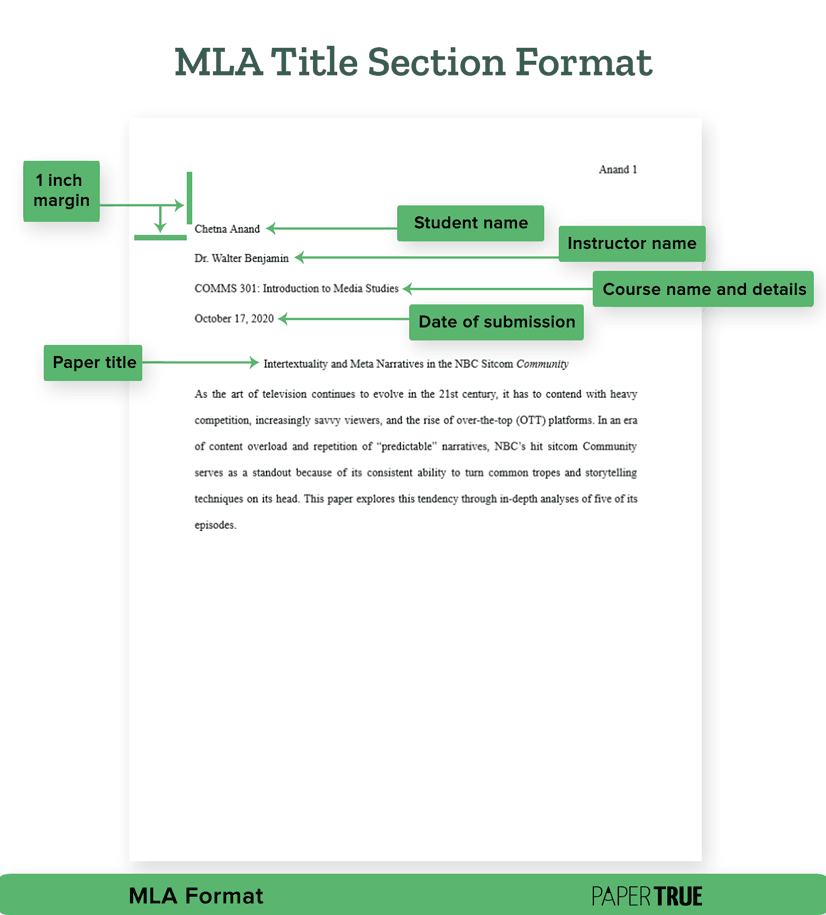
Works cited page
The “Works Cited” page in the MLA 9 format lists all the sources referenced in your paper. This page plays a crucial role in formatting research papers to avoid plagiarism. While working on your MLA works cited page, keep the following points in mind:
- Start on a new page with the label “Works Cited”, centered and bolded at the top.
- List your entries in alphabetical order by the last names of the authors.
- Make sure each entry is double-spaced.
Remember, the works cited page is not a bibliography. It should only include sources you’ve quoted or paraphrased in your paper!
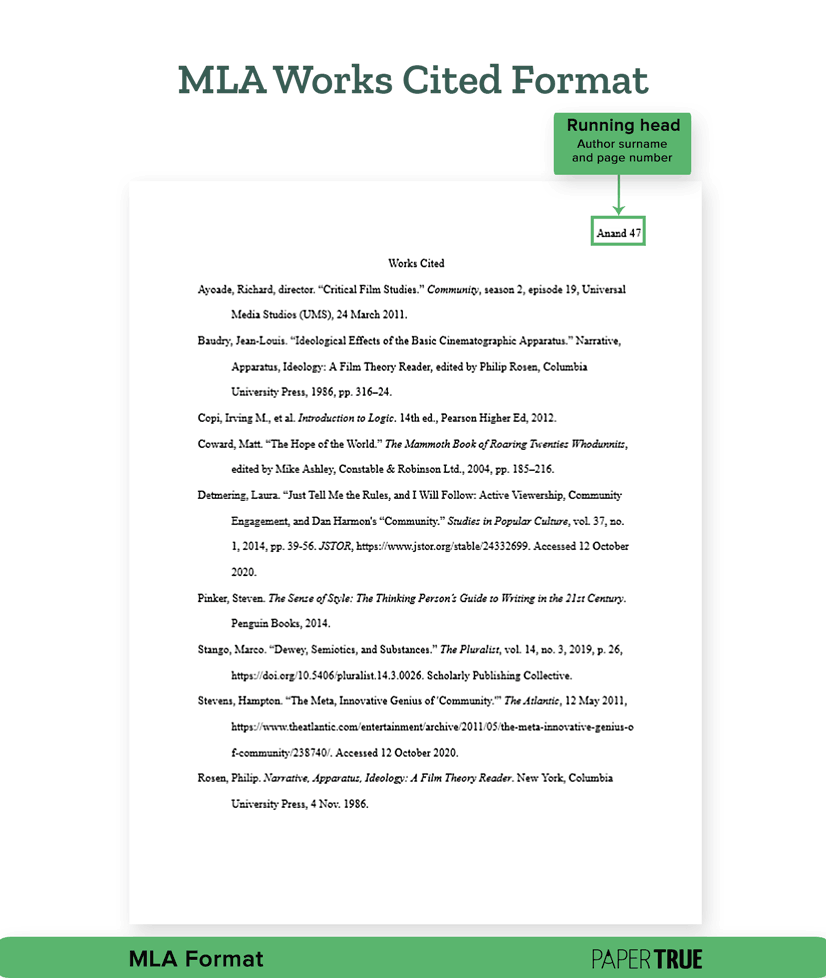
Special formatting guidelines
One of the defining characteristics of the MLA format is its use of parenthetical citations, making the MLA research paper format unique. Instead of footnotes or endnotes, sources are cited in the text using the author’s last name and the page number. For example, (Smith 23).
Here are some additional guidelines for formatting your paper:
- In-text citations should directly follow the quote or paraphrase, but they should come before the period at the end of the sentence.
- Every major word in the title of a work must be capitalized.
3. Chicago format
The Chicago Manual of Style (CMOS), or simply the Chicago research paper format, is another commonly used style in academic and professional writing. Preferred by historians, this format offers flexibility and comprehensiveness to accommodate a wide variety of sources.
General guidelines
The general guidelines of the Chicago format are similar to those of the MLA and APA research paper formats, with minor differences.
Here are the key points to remember about the Chicago paper format:
- Use double spacing for the main text.
- Use single spacing for block quotes, table titles, and figure captions.
- Maintain one-inch margins on all sides for a neat presentation.
- Use a readable font such as Times New Roman, size 12 pt.
- Start page numbers from the second page, and place them in the top right corner.
The Chicago format provides specific instructions for page layout elements like font choices, headings, and the overall organization of the paper.
Title page
In the Chicago style, the title page includes the title of the paper, the author’s name, and your course information. Unlike other styles, the title page of a Chicago-formatted paper does not carry a page number or a running head.
Remember these two things while formatting your Chicago title page:
- Make sure the title is positioned at the center of the page.
- Add your name and class information some lines below the table.
Observe the following example for the Chicago research paper format:
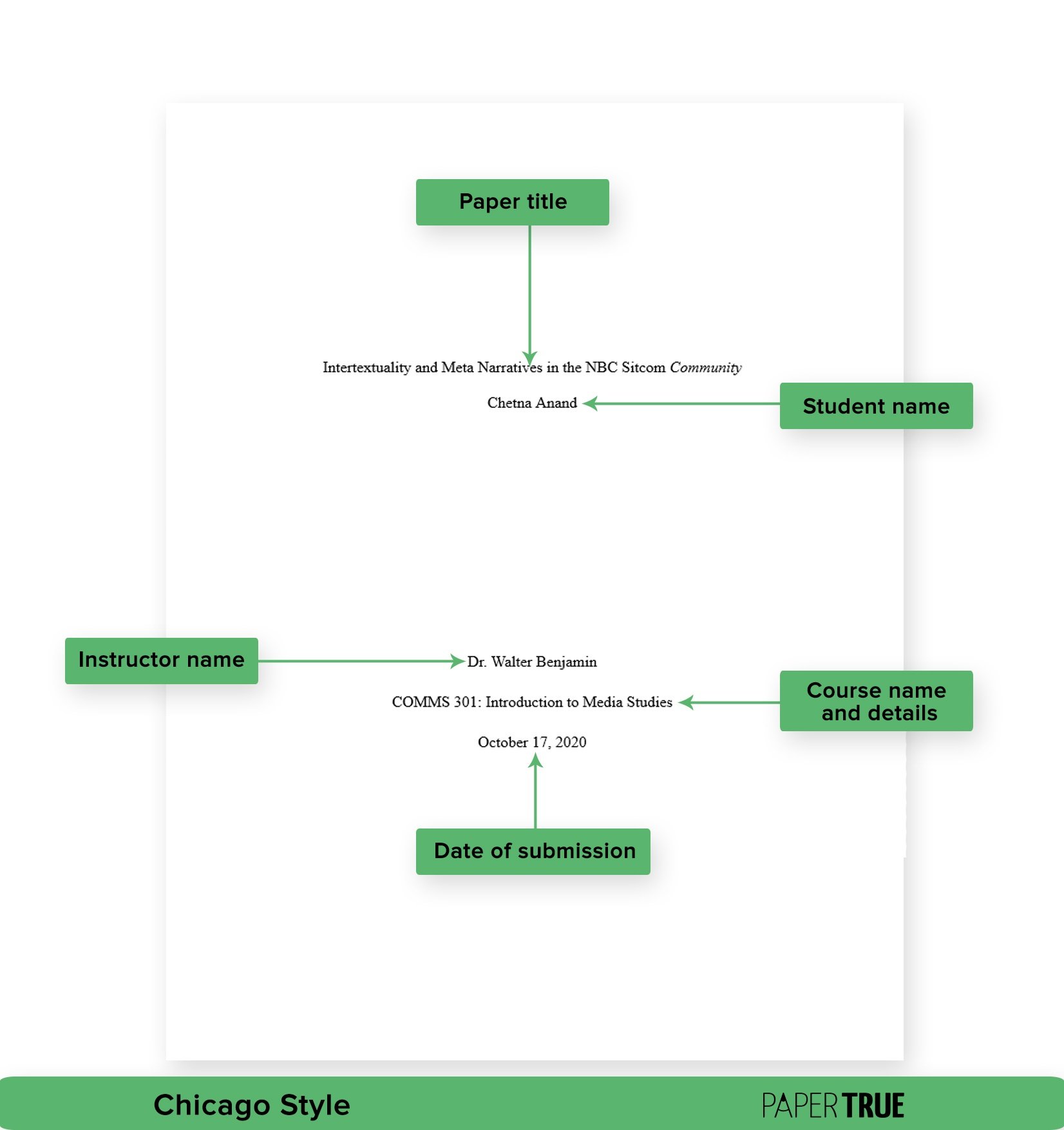
Reference page
The reference page in the Chicago style is referred to as the “Bibliography”. This page includes all the sources that you’ve cited in your paper. To correctly format your bibliography, follow the points mentioned below:
- Begin on a new page with the title “Bibliography” centered at the top.
- List your sources in alphabetical order by author’s last name.
- Use a “hanging indent” for each entry (the first line begins at the margin and the following lines are indented).
Bonus Tip: Make sure the bibliography includes all works that were consulted, not just those cited in the text.
Special formatting guidelines
One of the unique features of the Chicago style is its use of footnotes or endnotes for citations. When you quote or paraphrase a source, you’ll include a superscript number in the text that corresponds to a note with the citation information.
Here are some additional guidelines to format your paper in the Chicago style:
- Number the footnotes or endnotes consecutively, using Arabic numbers.
- You can be flexible with headings: Either stick to the classic five-level style or create your own.
- Ensure you stay consistent in your approach throughout your paper.
Bonus tip: The first time you’re citing a source, give all the citation info. Feel free to use the short version after that.
Formatting your research paper is much more than just improving aesthetics. It’s about making things easy to read, keeping everything on-brand, and showcasing your attention to detail. Understanding the nitty-gritty of the APA, MLA, or Chicago research paper formats is essential to producing high-quality and well-organized research papers. Additionally, always understand the specific formatting requirements of the target journal when preparing a research paper.
We hope this article showed you how to format a research paper. After all, it’s our duty to equip you with the tools you need to excel academically. Otherwise, what good is our expertise as a paper editing service?
If you’d like to keep creating well-researched and organized scholarly papers, here are some resources that could help:
- How to Write a Thesis Statement: Examples & Tips
- How to Write a MEAL Paragraph? Writing Plan Explained in Detail
- What Is a Mind Map? Free Mind Map Templates & Examples
- Literary Analysis Essay: 5 Steps to a Perfect Assignment
- Research Paper Proofreading | Definition, Significance & Standard Rates
- Independent vs. Dependent Variables | Meaning & Examples






